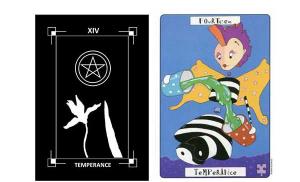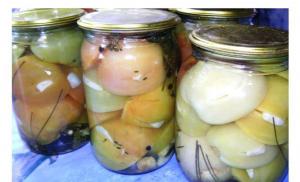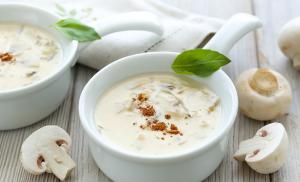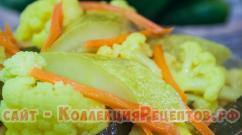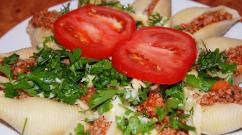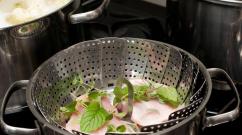What a mushroom. Boletus mushrooms: photos and descriptions of edible species, distinctive features of false boletus mushrooms
The butterfly mushroom got its name because of its oily skin on the cap. It is advisable to remove this slippery and sticky film from mushrooms before cooking. Read below on how to easily clean boletus. Otherwise, it is an ordinary mushroom, classical in shape, with a spongy cap. It can grow to a maximum of 12-15 cm, but the most delicious specimens are small. It is at the beginning of their growth that butterflies are dense, clean, with a light stem and light yellow flesh. And the film on the top of the mushroom is very sticky and slippery at the same time. As the fungus grows, it becomes weathered and coarser.
Common types of oilseed
Here we will look at the varieties of these mushrooms, clarify which of them are edible and which are not. We will give a description and basic distinctive features different types. Let's show in the photo what a real oiler looks like.
Edible boletus, photo
Common oiler, description
Its other names are yellow, late, autumn or true oiler. This mushroom has a convex brownish-violet, brownish-chocolate, red-brown or yellow-brown cap, covered with a slimy skin that is easily removed. The cap is from 4 to 12 cm in diameter. The tubes, attached to the stem, are light yellow, and then lemon yellow, darkening over time. The spores are brown.
The leg of this oiler is from 5 to 11 cm high and with a diameter from 1.5 to 3 cm. There is a ring on it, which is formed when the cover ruptures. Above the ring the leg is white, and below it is brownish-violet. The ring itself is white on top and purple on the bottom.
The common butterwort grows from the end of July to the end of September, mainly in pine forests. There are no poisonous doubles.
Oiler white

It grows in a small group from June to October, mainly under pine and cedar trees. With age, the shape of the cap changes: at the beginning it is convex, then becomes flat or with a slightly concave middle. The diameter of the cap is from 5 to 12 cm. The skin on the cap is smooth, slimy, light yellow color, with purple spots appearing over time. The leg is first white-yellow, then slightly darkens, 3-8 cm high. There should be no ring on the leg. The flesh of these butternuts is white in the middle and yellowish above the spores, not particularly expressive in smell or taste. It is best to collect white boletus young, since with age this edible oil dish rots quickly.
Oiler grainy

An edible mushroom that is found often and in large quantities among thickets of young growth, on the edges, and near forest roads. Most often among pines, but often under spruce trees. Grows from June to November.
This mushroom has a cap with a diameter of 4-10 cm, the color and shape of which, like most butter mushrooms, changes with age. Young butterflies have a convex, red-colored hat, while older ones have a cushion-shaped, yellow-orange hat. The shurka is dry, shiny, but in damp weather it becomes slimy. It is easy to separate from the pulp. This edible granular oiler is characterized by a light yellow stem with dark yellow, brown or brownish spots. Its height is from 4 to 8 cm, its diameter is 1-1.5 cm, its shape is cylindrical. Often, at the top of the leg, droplets of whitish liquid are visible, secreted by the pores, which, when dried, form an uneven surface and brown dots. There is no ring on the leg.
The flesh of the mushroom is yellowish, has a pleasant smell and nutty taste. The interesting thing is that these edible boletus do not darken when cut. Spore powder is yellow-brown.
Oiler yellow-brown

Other names for this mushroom are variegated butterfly, marsh mothball, sandy mothball, swamp moth, and variegated moth. It grows in several pieces or in not very large groups in pine forests, often together with heather.
This oiler has a cap from 5 to 14 cm in diameter. On a young mushroom it is semicircular, but then becomes cushion-shaped. Typically, the color of the cap of young butterflies is olive, while that of adults is yellow with brown, orange, and reddish hues. The skin of the oiler is difficult to clean. Its surface is not slimy (like others); in young mushrooms it cracks into small scales. Initially, the surface of the cap is woolly, and as it grows, it becomes finely scaly.
The leg is cylindrical, with a diameter of 1.5-2 cm and a height of 3-10 cm. The flesh of the butterdish is light yellow, turns blue when cut, this is normal. The cut on the leg takes on the same shade.
If you break the mushroom, you will notice a metallic or pine smell.
Yellow-brown butterdish is very good when marinated.
Conditionally edible boletus
Such mushrooms include, for example, larch butterfly, gray butterfly, goat and yellowish butterfly, while others consider all these mushrooms to be edible. Let us clarify that these mushrooms can be eaten, but they must first be subjected to heat or other additional processing.
Larch oiler, description

This oil can often grows in symbiosis with larch, but it can also be located quite far from trees.
The mushroom cap of this species is bright yellow or bright orange, 3-15 cm in diameter, at first strongly convex and cone-shaped, and with growth it becomes flat and cushion-shaped.
The stem of the oiler is 4-10 cm high, often reticulated, the same color as the cap, having a light mucous ring that quickly disappears.
The flesh of the butterdish is dense, yellow in color, darkening when cut. The smell and taste of this mushroom are pleasant. The pores are thin, lemon-yellow, darkening over time.
Mushroom Mullein

Other names: lattice mushroom, goat mushroom, cow mushroom. This mushroom grows under pine trees in damp forests and swamps, often next to the yellow-brown oiler. The mullein season is from July to November; these mushrooms are found singly or in groups.
This is an orange-brown or rusty-brown mushroom, not very big size and with a sour taste. The cap is typical for boletus - first convex, then cushion-shaped, with a diameter of 3-11 cm. The skin is slimy, smooth, shiny, easily separated from the pulp.
The leg is 3-10 cm high and up to 2 cm thick. It is sometimes unnoticeable from under the hat, since it is the same color as the top. There is no ring on the leg. The pulp of the cow mushroom is elastic, yellowish with a brown tint. The flesh of the leg may be red-brown in color.
This edible variety of butternut squash is great for pickling.
False boletus: photo and description
Some types of butter mushrooms are often confused with pepper mushrooms.
Pepper oiler

Other names: pepper flywheel, perchak. Unlike boletus, pepper mushroom belongs to the genus Chalciporus. False boletus grows from June to October, usually in small groups or individually.
Some experts classify this mushroom as inedible, others consider it edible, but recommend eating it in small quantities. Unlike edible butter mushrooms, this mushroom has a peppery, hot taste. It is used in kitchens different countries to add flavor and piquancy to dishes. With prolonged heat treatment and drying, the peppery taste of the mushroom disappears.
Perchak mushroom is small in size. Its cap has a diameter of up to 5 cm, it is convex, smooth, shiny. The height of the leg is 4-6 cm, with a thickness of 0.3-1 cm. It is slender, tapering downward. The color of the pepper buttercup is light brown or brown, but the flesh of the stem is yellow, slightly reddening when cut.
We would like to note that real boletus always has a spongy structure at the bottom of the cap.
Photos of oil

edible boletus

edible boletus
Cooking butter, recipes
Butter can be boiled, fried, stewed, baked, or made into soups. Mushrooms do not take long to cook – 15-20 minutes. You can add various spices and vegetables to them.
You can prepare butter for the winter: salt, pickle, freeze, dry.
Drying the mushroom is inconvenient only because the mushroom becomes thin and brittle. But the dried parts can be ground in a blender to obtain a fragrant mushroom powder that can be stored for a long time.
You can cook boletus mushrooms with the skin, but it becomes tough and gives off bitterness. When cooking, the color of the butter pulp, as a rule, does not change.
How to clean boletus

Before you start cooking boletus, their caps should be cleaned of the sticky mucous skin. Do not wash boletus before processing! Sticky caps will begin to stick to your hands, and the cleaning process will be long and difficult.
Try this method to easily remove the skin from the butter dish: clear the mushroom cap of debris, cut it vertically into two parts until the skin is removed, move the halves of the cap in different directions and quickly pull the sticky film - usually it will come off completely.
You can simply pick up the edge of the film with a knife and carefully remove it. In any case, cleaning boletus mushrooms is easier and goes faster with dry mushrooms.
Cleaning oil with boiling water
This can be done in two ways:
- Boil water in a saucepan average size. Throw the mushrooms into it for half a minute and then drain into a colander. After this procedure, the skin with the mushroom is easily removed;
- Pour water into the pan and wait until it boils. Place the mushrooms in a colander. Place the mushrooms in a colander over boiling water for half a minute. There is no need to put them in water - just hold them over the steam. The film can be removed quickly and easily with a knife.
Butternuts should not be soaked for a long time, as they strongly absorb water. The boletus should be washed under running water, placing it in a colander.
Fried butter with sour cream

- boletus – 2 kg;
- sour cream – 200 g;
- butter – 50 g;
- onion – 5 heads;
- salt;
- garlic cloves – 3 pcs.;
- nutmeg - a pinch.
Cut the pre-boiled mushrooms into pieces and place in a hot frying pan with oil. Frying the butter lasts 15 minutes, then you need to add the diced onion, stir and fry for another 10 minutes. Add salt, add diced garlic and nutmeg, simmer for 10 minutes.
Pour in sour cream, stir well and simmer over medium heat for 15 minutes. If you don't love a large number of sauce, then use 2 times less sour cream.
Now you know how to cook butter, fried with onions and sour cream, now all you have to do is try it.
Soup with butter

Fresh boletus mushroom soup with potatoes
- Water – 2.5 l;
- Fresh boletus – 400 grams;
- Potato tubers – 700 grams;
- Onion – 1 small head;
- Fresh herbs;
- Salt, pepper, bay leaf.
The recipe for fresh boletus soup includes pre-boiling the fruiting bodies in the above-mentioned manner. It must be said that for young mushrooms this process is not considered mandatory.
Making soup. Place the prepared mushrooms in a saucepan with water and put on medium heat, cook for 20 minutes. Meanwhile, peel and wash the potatoes, cut into small cubes. We also peel the onion and cut it as finely as possible.
After 20 minutes, place the potatoes in the pan and salt until desired taste. 10 minutes before readiness, add onions to the mushrooms and potatoes. Season the almost finished soup with a mixture of ground peppers and throw in a few bay leaves.
Remove from heat and let sit for 40 minutes. Serve, garnishing each serving with chopped herbs. Sour cream will be a very tasty addition to this dish.
I must say that the recipe mushroom soup fresh butter is highly valued among those who are on a diet, fasting, or for some reason do not eat animal products.
Freezing butter for the winter
You can freeze mushrooms with preliminary heat treatment and fresh ones. The second method is preferable, since it allows you to save natural look and the aroma is oily. And you can cook any dish from such mushrooms. In the first case, we mean freezing already boiled and fried mushrooms, but, accordingly, the variation of dishes prepared from them decreases.
In any case, mushrooms must be peeled before freezing. Small mushrooms are frozen whole, large ones are cut into “convenient” pieces.
Recipe for marinated butter
It’s not difficult to marinate boletus, but you need to know some of the features of this process. Let's stop at them. Small mushrooms must be marinated whole, cutting off only the very bottom part of the stem, mushrooms large sizes cut into several parts. And most importantly, the boletus is pre-boiled in salted water with the addition of citric acid or vinegar. For large specimens, the boiling time is 25-30 minutes, and for small ones – 15-20 minutes.

Marinated boletus with vinegar, cinnamon and cloves
- mushrooms – 2 kg;
- water – 1 l;
- vinegar – 100 g;
- salt – 1 tbsp. l.;
- sugar – 1.5 tbsp. l.;
- allspice – 8 peas;
- cinnamon – 1 tsp;
- cloves – 8 branches;
- bay leaf – 5 pcs.
Boil the mushrooms in salted water in advance, drain the liquid, let the mushrooms cool and cut into pieces. Dissolve sugar and salt in water, let it boil, add butter and boil for 15 minutes. Add all the spices and let simmer together with the mushrooms for 10 minutes over low heat. Remove the pan from the stove, let cool and distribute into sterilized jars along with the marinade.
Cover with plastic lids and take to a cool room or leave in the refrigerator. This method allows the product to be stored for up to 6 months.
Pickling butter with vinegar and garlic
- boletus – 1 kg;
- garlic – 5 cloves;
- vegetable oil – 4 tbsp. l.;
- vinegar - 4 tbsp. l.;
- white peppercorns – 5 pcs.;
- black peppercorns – 10 pcs.;
- bay leaf – 4 pcs.;
- water – 500 ml;
- sugar – 1 tbsp. l.;
- salt - to taste;
- turmeric - a pinch.
As mentioned earlier, the mushrooms should be boiled in salted water, drained and cut into pieces. Make the marinade: combine water, sugar and salt in a saucepan, put on the stove and boil.
Add mushrooms to boiling water, add vinegar, finely diced garlic and all the spices, stir well and let simmer for 15 minutes. Pour in vegetable oil, boil for 5 minutes and remove from heat.
Allow to cool completely, place in jars and fill with marinade. Cover with plastic lids and place in the refrigerator.
Butter recipe for pickling with vinegar and garlic has unusual taste and are well suited as a side dish.
Marinade for butter

How to cook delicious marinade for mushrooms, based on this list of ingredients?
- 3.5 kg of peeled and boiled butter;
- 2 tbsp. l. table salt;
- 5 tbsp. l. acetic acid 9%;
- 3.5 tbsp. l. Sahara;
- 1.5 liters of purified water;
- 2 g cinnamon (optional);
- 1-2 sprigs of cloves;
- 5-8 peas of allspice;
- 4 bay leaves.
Place the water on high heat and let it boil.
We send all the spices from the list of products (except for vinegar), stir until the salt and sugar crystals are completely dissolved. After our marinade has boiled for about 5 minutes, pour vinegar into it and throw in the mushrooms. You need to cook the forest fruiting bodies until the marinade becomes transparent.
We distribute the mushrooms evenly among the prepared jars, roll them up or close them with tight nylon lids.
Calorie content of fresh butter
The calorie content of fresh butter is 19 kcal per 100 grams of product.
Butter also contains vitamins B, A, C, PP, microelements: zinc, copper, phosphorus, iodine, manganese, potassium, iron, as well as salts, monosaccharides and disaccharides.
Fresh boletus contains proteins, fiber, carbohydrates, minerals and fats. Butter proteins are similar in properties to animal proteins, which are rich in valuable amino acids. Young boletus mushrooms contain larger number proteins than the old ones.
Canning butter, video
Maslyata mushrooms are welcome guests in the basket of every mushroom picker. Butter is suitable for any culinary processing, have good taste. Boletus mushrooms, which we will describe below, must be distinguished from false oils so as not to get poisoned.
Boletus mushrooms - photos and descriptions of species
Early flocks of boletus are the most welcome gift for the mushroom picker, who has been eagerly awaiting their appearance since mid-June.
Description Light yellow oiler
It is the light yellow granular oiler (Suillus granulatus Kuntze) that is the first to appear in a conspicuous place after warm thunderstorms and regularly bears fruit 3-5 times per season.
Light yellow or light brown caps stick out from the moss litter in young pine forests, on humus in deciduous forests, along forest roads and in clearings with short grass. After rain, the mushroom is slimy, your hands turn black and cannot be washed off. Under the cap there is a tubular layer of light yellow color, the leg without a ring, dense, light yellow, short. The flesh of the mushroom is light, does not darken when cut, and the top film comes off easily.

Photo: General characteristics and description of the type - Light yellow oiler
True or yellow-brown oiler - description of the species

Later, from the second half of summer until serious frosts in October, the so-called late boletus (Suillus lu-teus Gray.), or real ones, appear. The color of the upper film of the cap of this species varies from dark yellow to medium brown, sometimes with a brown color in the center.
The skin is easily peeled off the convex cap and mercilessly sticks to your hands, making it immediately obvious who brought the butter today. The down tubes are very light, small, and look like a sponge. The dense, thick stem has a ring, which covers the down in young specimens, but remains in the form of a white thin film in older specimens.
This variety loves light colors pine forests and is found in huge colonies in suitable summer. At one edge you can pick up 2-3 buckets of wonderful mushrooms at a time, even if you cut off the wormy stems and throw away lightly eaten specimens. You can pick it up, but then you have to suffer until the night with cleaning the terribly sticky films that must be removed.

Photo: General characteristics and description of the species - Real oiler
Larch oiler - description of the species

In the larch forests of Siberia there is a larch butterfly (Suillus grevillei Sing.) with a very bright yellowish-orange, almost red cap from a distance. The down of the mushroom is lemon-yellow, with pinpoint pores and covered with a white blanket, which gradually comes off from the edges of the cap and remains on the leg in the form of a ring.
The leg, yellow-brown with burgundy coloring, when cut, has light yellow flesh that does not darken in air. On the European territory of Russia, the mushroom is also found under deciduous trees. Under one old larch tree in the Tver region, which was planted 40 years ago, these unusual mushrooms, causing the surprise of all the experienced mushroom pickers. And what wind blew them away?

Photo: General characteristics and description of the species - Larch oildish
There are other types of buttermilk, but they are not so common in our latitudes, or are not eaten, although they are not poisonous, they do not have a good taste.

Marsh butterwort - grows in swamps and wetlands. The swamp butterdish is edible, but its taste is less pronounced than that of other species. The mushroom cap is dirty yellow, sticky, the flesh is dense, lemon-colored, and when cut it takes on a wine color.

Pepper butterfly lives in deciduous and coniferous forests, and is inedible mushroom, because of its hot peppery taste. The cap is convex, funnel-shaped in adulthood, brown in color. When pressed, the pulp acquires a bluish tint.
How to distinguish false butterflies
Before you go into the forest and collect boletus, you need to figure out what they look like poisonous doubles, so as not to send the false brother of the mushroom to the basket.

Less experienced mushroom pickers may confuse boletus mushrooms with young panther fly agarics. Panther fly agaric is very poisonous and causes intoxication in the body.
The panther fly agaric looks a bit like an oil can only in its youth; later the cap acquires an expressive pattern, and you can no longer confuse it. To distinguish the false oiler, panther fly agaric, carefully examine the leg; in the fly agaric it is thicker and has a ring that disappears in an older mushroom. In addition, there will be no insects near the mushroom; even the smell of the mushroom is poisonous to them.

The false oiler is not as dangerous as the fly agaric, but it will not bring anything useful. It can be distinguished from its edible counterpart by the plates under the cap - false oiler they are pronounced. In addition, the cap may have a purple tint.
To distinguish an edible butterdish from an inedible one, turn the mushroom over. There is always a film under the cap of the oiler. If you remove it, and under the film there is a porous surface of the mushroom, you have an edible mushroom. If the inner surface of the cap is in plates, it is better to throw out such a mushroom. The false oiler turns yellow when cut, and the color of the inside of the cap is slightly grayish.
The boletus, the descriptions of which we have given above, will be a welcome guest on your table; if you understand how to distinguish false boletus, you will be able to cook delicious dishes with pleasure!
Video: Description of varieties of butter
Well, there is simply not a person on the planet who has not heard of such a mushroom as the butterdish. In addition to its attractive appearance, butterdish is very tasty, healthy and grows on absolutely any soil, in the same place as russula. But they also have a significant drawback - difficulty in preparation. This is not a champignon that can simply be thrown into a frying pan and fried without prior heat treatment. The butter dish requires more delicate manipulations during preparation. Well, let's not get ahead of ourselves.
Description
Mycologists divide all mushrooms into three types:
- Tubular (their cap consists of small tubes).
- Lamellar (the caps form the plates).
- Marsupials (spores are kept in special storage facilities).
Boletus mushrooms are classified as the first type. The cap is a sponge formed by many small tubes. There are spores inside the tubes. The cap of a young mushroom has a semicircular shape with a ring at the edge. The old mushroom has an open cap, and the ring on the leg is barely noticeable. When you cut into a mushroom, its edges begin to turn slightly blue.
Edible types of oil cans
Ordinary oiler. This species is the most common in Russia. The hat is flat with curved edges. There is a noticeable bump in the center. Color brown.
The pulp is very juicy. The leg is solid, white. The older the mushroom, the darker it becomes. In very old fruits, the stem becomes dark brown. Its height varies within 10 centimeters.

The species is found almost everywhere, but favorite place However, as with any mushroom, the area is coniferous.
Ideal conditions for the development of a species family:
- Sandy soil.
- Good drainage.
- Dampness.
- Air temperature from +18 degrees Celsius.
It grows between July and October.
Larch oiler. It got its name due to the fact that it can most often be found in the larch habitat area. The mushroom is edible, but the taste is simple, without any aftertaste.

- A convex cap that becomes flatter as it ages. Its color is very bright. Fruits of a bright yellow, orange, or less often, dark brown hue may be found.
- The pulp is dense, yellow in color. When a young mushroom is damaged, its color does not change. If you damage an older fruit, then it will acquire a pinkish or reddish tint.
- The leg resembles a mace. Sometimes it has a curved shape. Height up to 12 centimeters, thickness does not exceed 3 centimeters. The color of the ring is white/yellow, less often brown.
The oiler is grainy. Also a very popular look. It tastes good. Unlike other butterfish, this species does not have a ring on the stem.

Main characteristics of the mushroom:
- The cap is convex, small, with a diameter of 4 to 10 centimeters. In dry weather it sparkles in the sun. When it rains, the mushroom becomes slimy. The skin color is brown, yellow-orange, less often burgundy.
- The pulp is dense, yellow in color. Smells like hazelnut. Does not change color when damaged.
- The leg is dense, cylindrical, light yellow in color. In older mushrooms, it turns dark brown closer to the root. The leg acquires this shade due to the fact that the mushroom secretes juice. It is no more than 8 centimeters in height and 1.5-2 cm in thickness. On the surface of the stem there are often granular formations, which is, in fact, how the mushroom got its name.
These are not all types of this mushroom. There are also others, however, less common in the Russian Federation. These are: white, yellow-brown, gray, American and swamp oiler.
False mushroom
The false oiler is a poisonous member of its genus. After consuming it, intestinal upset may occur. By itself, it tastes very unpleasant.

In order not to get poisoned, you need to pay attention to its appearance, because it is this that distinguishes a poisonous representative from an edible one.
Edible mushrooms have a yellow cap, brown colors. The false one is dark purple.
How to cook
Have you read the description edible species, we saw their photos, now it’s our turn to tell you how to cook this unique mushroom.
These mushrooms are one of the favorite varieties for cooks. Not only adults, but also children love them.
There are many ways to process butter. They can be pickled, fried, boiled. Below we will describe examples in various ways making these “slimy goodies.”
Soup
The soup made from them is very light and lean. After eating 100 grams of soup, a person will receive only 90 kilocalories.

To prepare it, you will need:
- 350 grams of mushrooms.
- 450 grams of potatoes.
- One carrot.
- One onion.
- A couple of bay leaves.
- 2 tablespoons of vegetable oil.
- Salt and spices to taste.
The recipe is extremely simple. It is prepared in the same way as other soups. First, potatoes are boiled, spices, fried onions and potatoes are added, and finally fried butter is added.
Capacity
There are a lot of recipes for making pickled butter. For one of them you will need:

- One kilogram of mushrooms.
- Half a liter of water.
- One tablespoon of sugar.
- Two teaspoons of salt.
- One bay leaf.
- Black and allspice 2-3 pieces.
- 2 pieces of cloves.
- 6% vinegar – 50 ml.
- 1-2 cloves of garlic.
The oils are pre-cleaned and washed well. Then they are boiled for 20 minutes in salted water. To prevent the mushrooms from darkening, you can add a little citric acid to the water.
After the mushrooms are cooked, you need to prepare the marinade. To do this, take a saucepan and pour into it all the ingredients described above except garlic and vinegar. Place this on the fire and bring to a boil. When the mixture boils, add butter and cook for 30 minutes. Five minutes before removing the pan from the heat, add vinegar to the marinade.
Then all this is sorted into banks. The jars are pre-sterilized. Place a clove of garlic at the bottom of the jars, and pour the marinade on top of it.
How to fry butter
Frying in sour cream
Nobody fries mushrooms just like that. It's not as tasty as combining mushrooms with some kind of suitable product, for example, with sour cream. Sour cream will make the mushrooms fragrant and tender.
To prepare such a dish, we will need 500 g of the butter itself, 4 tablespoons of sour cream, 1 onion, a little vegetable oil and butter and spices to taste (garlic, salt, etc.).

Now let's start cooking:
- First of all, rinse the boletus, cut into small pieces and boil for 7-10 minutes in salted water.
- Cut the onion into rings and fry it in vegetable oil until golden brown.
- Add the mushrooms and fry them in a frying pan for about 5 minutes over medium heat. Set the heat to low and add butter. Fry the butter for another 10 minutes.
- After 10 minutes, add spices and sour cream. Cover the dish with a frying pan and simmer for about 5 minutes.
- The dish is ready to be served.
Fried boletus with potatoes
This is the standard way to prepare fried mushrooms. To prepare, we need 400 g of butter, 500 g of potatoes, 1 onion, vegetable oil and spices.

After boiling the mushrooms, place them in a colander to drain excess juice. Meanwhile, heat the oil in a frying pan. Next, we begin to fry the butter. Meanwhile, finely chop the onion and add to the butter. Fry mushrooms and onions for 3 minutes.
Preparing the potatoes. You can fry it in the same pan in which you cooked the mushrooms, or use a second one. Add potatoes and spices to the pan. Fry it. 2-3 minutes before complete cooking, add mushrooms. The dish is ready to eat.
From the middle summer months and until approximately the end of September in our forests you can find a huge number of delicious mushrooms. Boletus is especially good, and not a single mushroom picker disdains it. Unfortunately, one danger may lie in wait for an inexperienced assembler. The fact is that there are false oils, poisoning with which does not lead to anything good. But there are several reliable ways to distinguish these “werewolves” from our article. Our article will tell you about them.
Appearance
Common butterflies immediately catch the eye, as their shiny yellowish caps are hard to miss in the forest moss. Their peculiarity is that they grow up as whole families. Found one oiler? Most likely, there are a dozen more lurking nearby!
But every mushroom you find needs to be carefully studied. You need to examine the color of the cap especially carefully. All false boletus differ from their edible “colleagues” in that their caps have a certain purple tint.
You can discover many surprising things by simply turning the mushroom you find upside down. If it is edible, then inside there will be a whitish film, under which hides that porous structure that is so characteristic of good butter. But their dangerous relatives do not have this. All false boletus have a lamellar structure reverse side hats that make them easy to distinguish!

In addition, the plates have a grayish color, which also makes them visible to an experienced mushroom picker. Real butterflies have a hat at a young age has a pleasant yellowish color, and its reverse surface (remember once again that it should have a porous structure) is painted in exactly the same way.
Their “fake” relative should not be confused with the spruce sap fungus. He can often be found in appearance it somewhat resembles false boletus. This little-known mushroom It has a grayish cap with a mucous coating, as well as a reverse side with a lamellar structure. The surprising thing is that it is an edible mushroom, albeit not very common. But if you don't know exactly what's in front of you, don't take it!
What happens when poisoned
We have already noted more than once that false butter can be dangerous if accidentally consumed. It contains quite dangerous and strong toxins that can cause serious harm to your health.

If you accidentally eat it, the first signs of poisoning will be nausea, accompanied by a severe headache and fever. If you feel something like this after eating a mushroom dish, you should contact your doctor right away!
Just one false butterfly mushroom, which accidentally gets into a roast, can cause you a lot of problems, or even send you straight to a hospital bed. So once again we take the liberty of reminding you of the basic rule of a mushroom picker: if you’re not sure, don’t take it! One mushroom will not empty your basket, but you will be able to save your life and health.
With coming warm days, after heavy spring rains, the mushroom picking season opens. The butter dish occupies a popular place among lovers of nutritious delicacies. The edible mushroom is used to prepare aromatic soups, delicious filling, and also fried and marinated.
To avoid unpleasant oddities, not to make mistakes during mushroom hunting and to correctly identify the mushroom, you should familiarize yourself with the description and main distinguishing features of boletus.
Description
Mycologists (mushroom specialists) divide all mushrooms into three groups:
- tubular (the caps are made of tiny tubes);
- lamellar (plate-shaped caps);
- marsupials (spores in storage bags).
Butterfly belongs to the tubular type. The cap is a sponge consisting of thin tubes, inside of which there are spores. Oiler tubes vary in color scheme: from white to yellowish-brown.
The cap of a young mushroom has a hemispherical shape, the leg is surrounded by a ring with a fringe. The old ones have an outstretched cap with folded edges, and the ring on the stem is almost invisible. If you cut into the flesh, it will turn slightly blue.
Where does the oil can grow?
Traditionally, boletus forms mycorrhiza with some species of pines and larches. Please note that the favorite places of this family are:
- young coniferous plantings;
- sunny edges and glades;
- the side of a forest road;
- free-standing coniferous trees;
- places after fires.
There are about 40 varieties of boletus in the world. They are common in coniferous forests of the European part of Russia, in Western Siberia, on Far East, in Ukraine and Belarus. Some species are known in Australia and Africa. The mycelium prefers to bear fruit on light sandy soils containing limestone and organic matter.

The false mushroom is poisonous, can cause intestinal poisoning, and has a bitter, unpleasant taste. To avoid trouble, you should know what this species looks like and familiarize yourself with the distinctive features false mushroom from the ordinary, the present. The main difference between edible buttermilks and false ones is their appearance.
If we met dangerous mushrooms, you need to immediately focus your attention on the color and structure of the cap. Common butter mushrooms have a brown cap, covered underneath with a white film, which, when torn, remains on the stem of the mushroom in the shape of a ring. The pepper (false) oiler has a pale purple cap with a yellow-cream inner surface.
Note: The internal tubes of the false ones are slightly larger than those of the edible ones.

Common oiler

The most common and popular in our region is the autumn or ordinary oiler. The cap has a hemispherical shape with a tubercle in the middle. The skin is brown, less often olive tones.
The juicy pulp and tubular layer are yellow in color. A solid stalk with a white cover at the cap, and in older butterflies it becomes dark brown. The height of the leg of the autumn oiler reaches 10 cm.
The species can be found under pine trees, in mixed forests next to russula and porcini mushrooms. Sandy soil with good drainage and heavy rains Mushroom pickers will be pleased with the harvest. The common butterwort bears fruit from July to October. Optimal temperature for fruiting the indicator is +18 degrees, at –3 degrees, development stops.
Larch oiler

A spherical cap with a diameter of up to 10 cm, does not separate from the stem. Over time, it becomes a hemispherical shape. The caps of young butterflies are sticky and slimy to the touch. Uneven color distribution - from cream to orange. The thick flesh with a subtle mushroom aroma has a yellow tint.
The cylindrical leg is 5-7 cm high, up to 2 cm thick, slightly curved. The remains of a light blanket are clearly visible on it, the flesh is tougher and darker than that of the cap. When cut, the flesh turns pink. Instances of this species most often develop under larch, but often bear fruit under spruce trees. The collection of larch oil takes place from the second ten days of June to mid-September.
Oiler grainy

Granular oiler prefers calcareous soils coniferous forests. This species is found in the North Caucasus. The convex cap of young butterflies becomes flat with age. As the chocolate skin fades, it becomes gray shade. The yellow leg does not change color and does not have a ring like other species.
There is much less mucus on the cap of the granular mushroom. On the edges of the tubes of young oil, you can see droplets of white liquid.
Red-red oil can

Representatives of the species are distributed in the forests of Altai. They form mycorrhizae at the roots of larch. Young boletus have a light orange cap with a semicircular shape.
Porous tubes yellow color with supports. The orange leg tapers towards the bottom and top. The lemon pulp turns red at the break. The pulp has a slightly sour taste. Fruits from July to the end of October.
Mushroom signs

Every mushroom picker has his own Magic word for a hike in the forest. Some say prayers, and some say mushroom sentences. IN Smolensk region Until now, children throw the basket up in the air before going for the harvest.
If it sinks to the bottom, it's for mushrooms, and if it's upside down, stay at home. IN Kaluga region There is a sign that you cannot sing songs in the forest, otherwise all the mushrooms will scatter.
Useful properties of oil

Larch species are widely used in folk medicine. Its substances cope well with gout attacks and also relieve headaches.

- You need to collect young boletus, with a diameter of up to 4 cm, no more (in old specimens worms appear, and they also have a loose structure).
- Once you find one oiler, look for others nearby.
- The mushroom should be cut carefully with a knife so as not to damage the fragile mycelium.
- When cleaning, you should wear thin medical gloves, since the brown substance of the mushrooms eats into the skin and is difficult to wash off (more detailed information You can find out about proper cleaning of butterflies).
Look video review types of butter mushrooms:

